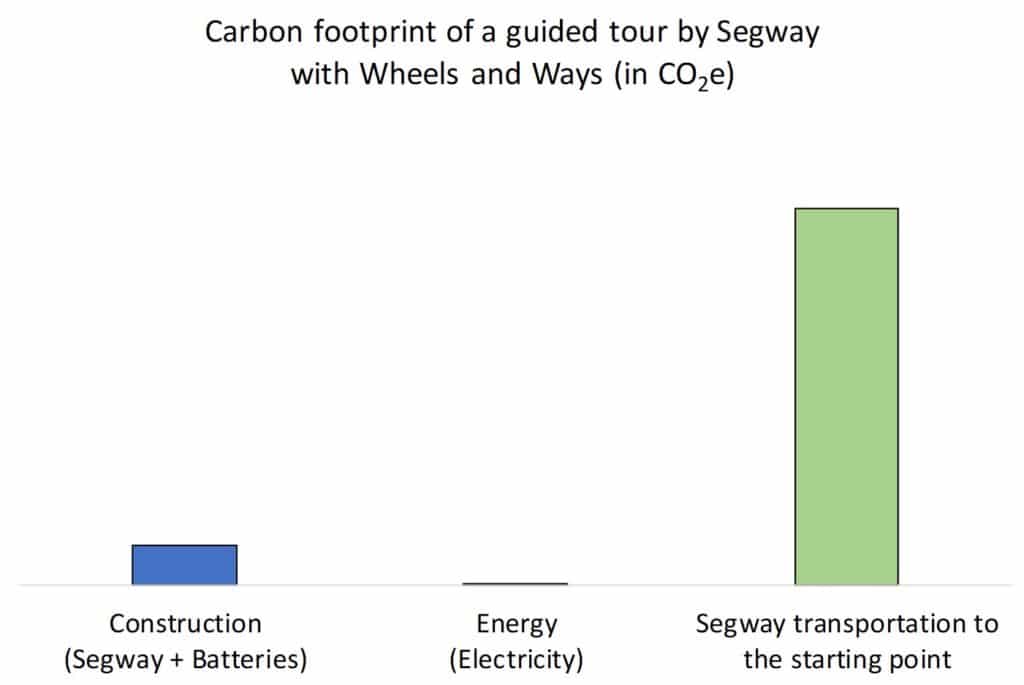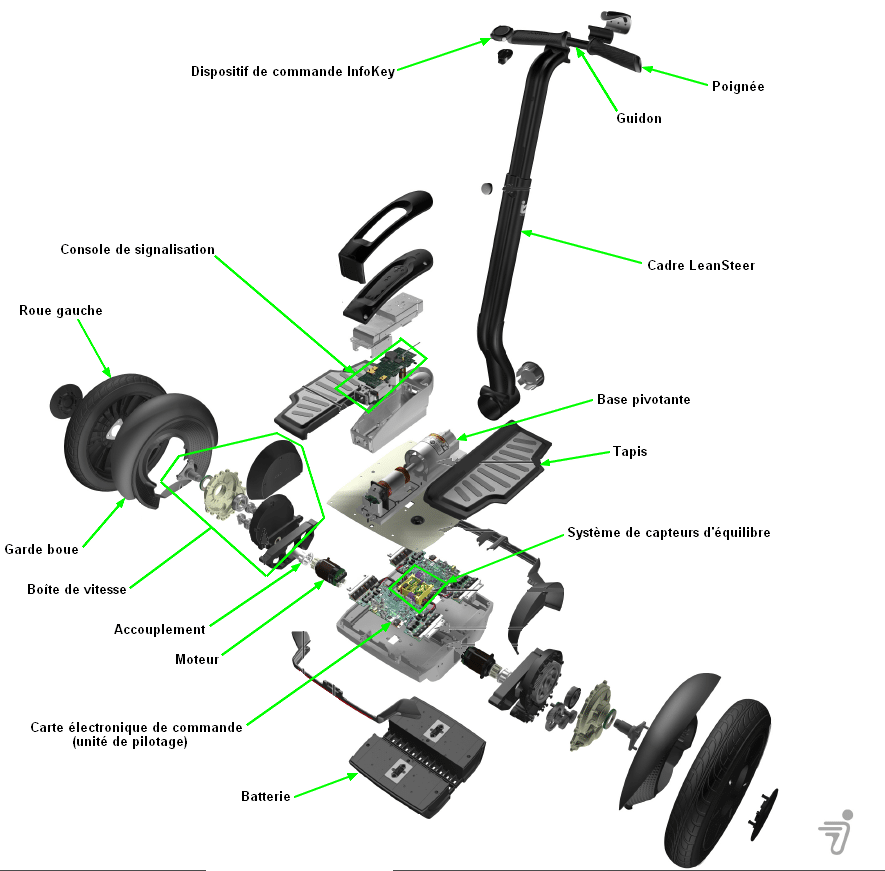The carbon footprint of a 2.5 hour guided tour with Wheels and Ways is 2.2 kg CO2 equivalent (« CO2e »). It is less than the carbon footprint of a spaghetti bolognese portion for 1 person.
The main greenhouse gas emission sources are:
1)The construtcion of the Segway and batteries : 206 g CO2e (9.55% of the global emissions)
2)The electricity for charging batteries after use : 0.35 g CO2e (0.01% of the global emissions)
3)The Segway transportation to the starting point : 1,950 g CO2e (90.44% of the global emissions)
Methodology and calculation details are shown hereafter.

Carbon footprint methodology
Many articles or Internet pages are saying the Segway PT I2 is « green », « carbon neutral », « the perfect ecological mean of transportation » and so on. Let’s measure the carbon footprint as accurately as possible !
To assess it, I will use the Bilan Carbone® methodology (compatible with the ISO 14064-1-2-3:2006, the ISO 14069:2013 and the GHG Protocol).
CO2e calculation for the construction of a Segway I2
Segways I2 we use in Paris are built in the US and then are transported by truck and boat from US to France. The Segway I2 is made of lots of components : wheels, gearbox, batteries Lithium Ion…
To assess CO2e emissions for the construction, i’m not going to calculate the carbon footprint of each component nor to measure the emissions generated by the road freight or sea freight. I’m going to use the Base Carbone® monetary emission factor « Machines and equipements ». This emission factor indicates that 700 kg CO2e are necessary for the construction of 1K€ of « Machine and Equipement » bought in France.
A Segway I2 or X2 costs € 8,500 hence 5.95 t CO2e (8.5 x 0.7) generated to build a Segway.
And if we go further, the construction of a segway generates 206g CO2e/km (115g CO2e for the batteries and 91g CO2e for the other part of the machine).

Calculation details
The 2 main Segway I2 components are :
1) the batteries Lithium Ion costs € 3,300€, so their construction generates 3 t CO2e
2) and the other parts of the Segway (wheels, leansteer, gearbox…) costs € 5,200€ hence 65 t CO2e
Segway Inc indicates that batteries can last up to 800 to 1000 full charges. Fully charged, the segway range is between 26 and 39 km (16 – 24 mi). So on a full life cycle basis the batteries range is 25km x 800 full charges = 20,000 km. Hence the ratio. 115 g CO2e = 2.3 t CO2e /20 000 km.
Concerning the other parts of the Segway, we will roughly consider the range is twice the range of the batteries. Hence the ration 91 g CO2e = 3.65 t CO2e /40 000 km.
CO2e calculation for the use of a Segway I2
1) Electricity consumption
In 2019, our Segway I2 machines did 3,100 hours and 7,100km of guided tours. The electricity consumption was 5,249 kWh. Hence a Segway electricity consumption of 1.75 Wh/hour and 0.75Wh/km.
A 2.5 hour 8 km guided tour electricity consumption is between 4.4Wh (2.5 hour x 1.75 Wh) and 5.9Wh (=8km x 0.75 Wh).
French electricity emission factor is 57g CO2e /kWh (Source : Base Carbone®), hence 0.35 g CO2e emissions for a 2.5 hour guided tour.
2) Segway transportation to the tour starting point
We load our Segway I2 in a van and carry them to the guided tour starting point. The average distance (round trip) is 30km and the average load is 10 segways. The emission factor of our van is 0.65Kg CO2e /km (including the construction of the vehicule and its gas consumption). So for each guided tour (1 person on 1 segway), the CO2 emissions generated by the transportation are 1.95 kg CO2e
Action plan
Although the carbon footprint of a guided tour is low, (2.2 kg CO2e), in 2019 the Carbon Footprint of Wheels and Ways company was 4 t CO2e. To reduce our carbon footprint, the following action plan has been implemented:
1) drive as smoothly as possible our van (« eco-drive »)
2) take care of the equipement (Segway and batteries) to make them last !
Milestones
Each year a “French” generates 12,000 kg CO2e
To limit climat change, each person should generate 2,000 to 2,500 kg CO2e a year.

